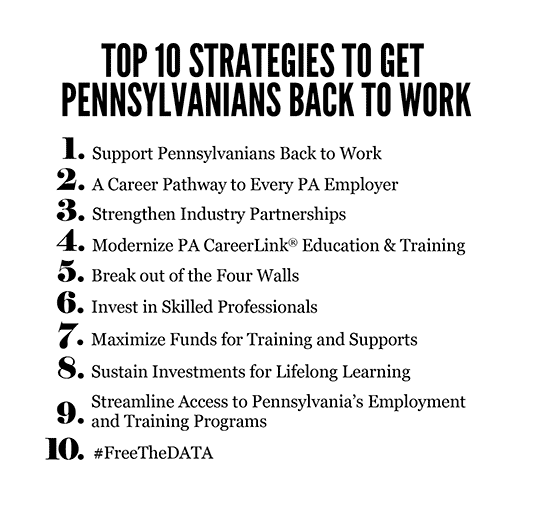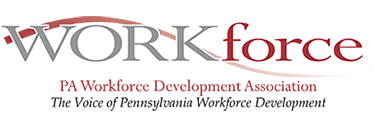
Let’s Make a Difference Together.
PA@WORK
The Pennsylvania Workforce Development Association (PWDA) represents the local workforce development system that serves and supports Pennsylvania employers in their talent needs, as well as the youth, workers, job seekers, veterans, and others on their education, training, and employment paths. Our members have a proven track record and know what it takes to help Pennsylvanians get back to family-sustaining work while also supporting employer’s access to skilled talent and resources.

Are you a PWDA Member?? Login to the Member Advocacy Center for member-only content and materials!
We Can’t Do It Without You
The Pennsylvania Workforce Development Association (PWDA) launched its Policy & Advocacy Fellowship Program (PAFP) in 2021 to raise the collective capacity of its members to engage in workforce development advocacy at the federal, state, county, and local level.
Selected Fellows receive intensive training on the federal and state legislative, administrative, and appropriations processes, and tangible experiences in developing and utilizing advocacy strategies.
workforce innovation
& opportunity act
FINAL RULES: On August 19, 2016, the Employment & Training Administration (ETA) – U.S. Department of Labor announced that the Federal Register published the official WIOA Final Rules. The final rules include the following five sections: the Joint Rule for Unified and Combined State Plans, Performance Accountability, and the One-Stop System Joint Provisions DOL Only Final Rule; Programs and Activities Authorized by the Adult Education and Family Literacy Act (Title II of WIOA) Final Rule; State Vocational Rehabilitation Services Program; State Supported Employment Services Program; Limitations on Use of Sub-minimum Wage Final Rule; and WIOA Miscellaneous Program Changes Final Rule.
OVERVIEW: On July 22, 2014, President Barack Obama signed the Workforce Innovation and Opportunity Act (WIOA) into law, a bipartisan and bicameral piece of legislation that reauthorizes federal workforce development and job training programs for the next six years.
The Workforce Investment Act (WIA), the nation’s largest single source of federal funding for workforce development activities, had been due for reauthorization since 2003. The passage of the new WIOA legislation authorizes Congress to fund federal workforce programs between fiscal years 2015-2020.
WIOA does not make drastic structural changes to the workforce system, but does include provisions that will streamline programs, strengthen the emphasis on serving local employers, increase the transparency of training providers, and create more consistent performance accountability standards. While it does not consolidate funding streams into block grants to states, the act eliminated 15 workforce programs, most of which have not been funded in recent years. It restores the state set-aside to 15 percent, and includes a 90 percent hold harmless provision for adult and youth programs to help protect against wide variations in annual funding levels due to the formula.

